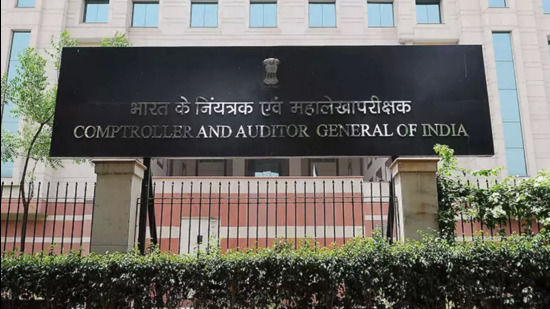Debt-to-GSDP ratio goes up in Uttar Pradesh: CAG report
The state’s public debt increased substantially by 60% in 2023-24 over the outstanding debt in 2019-20. The state’s economy in terms of GSDP grew by 42% during the same period
The Comptroller and Auditor General (CAG) has expressed concern over the increasing tendency to borrow funds, which has led to an upward trend in the debt-to-Gross State Domestic Product ratio in the past few years in Uttar Pradesh.

Uttar Pradesh’s debt-to-GSDP ratio increased from 23% in 2019-20 to 26% in 2023-24. The state’s total public debt was ₹6,67,106.03 crore as on March 31, 2024. This includes an outstanding debt of ₹6,14,778.94 crore from the market and different financial institutions and ₹52,327.09 crore from the Centre.
“The increasing trend of raising debt tends to increase the debt stock entailing debt distress on the state economy. This fiscal situation may result in augmentation of debt liabilities and reduction of capital expenditure i.e. development related spending,” observed the CAG in its report on the state’s accounts (2023-2024) tabled in the state legislative assembly here on Thursday.
Those aware of the development said the state government’s public debt increased mainly due to an increase in internal debt (especially increase in borrowings from market). The market borrowings constituted 72% of the total internal debt in 2019-20 and this increased to 87% in 2023-24.
The increasing trend of market borrowings has led to a rise in the state government’s borrowings over the years. The state’s public debt increased substantially by 60% in 2023-24 over the outstanding debt in 2019-20. The state’s economy in terms of GSDP grew by 42% during the same period. Its debt repayment was 5% of the total tax revenue and 18% of debt receipts during 2023-2024.
“Perusal of debt indicators reveals an increasing internal debt of the state government. Between 2019-20 and 2023-24, the increment in debt was more than 60%. Further, the debt-to-GSDP ratio also rose from 23% to 26%during the same period. It may be recalled that as per FRBM Act (Fiscal Responsibility and Budget Management Act), this ratio should be 20%. Fiscal prudence demands that the state government should be cautious in its borrowings so that there is no fiscal stress in future. Instead of depending on borrowings, the state government should garner more revenue from tax and non-tax sources for its expenditure,” said Professor Yashvir Tyagi, former head of department, economics, Lucknow University.
The state government’s capital expenditure, which is indicative of development-related spending, increased by 15% in 2023-24. The capital expenditure was, however, less than the budgetary estimates.






